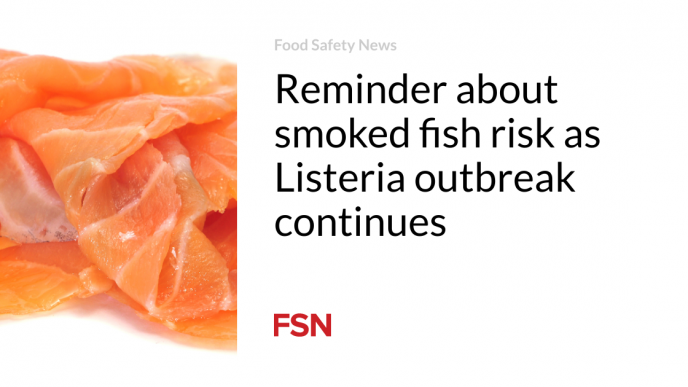SACRAMENTO, Calif. — A growing number of people — many of them older and homeless — are freezing to death during winter.
Hypothermia from exposure to cold temperatures was the underlying or contributing cause of death for 166 Californians last year, more than double the number a decade ago, according to provisional death certificate data from the U.S. Centers for Disease Control and Prevention. The age-adjusted rate of 3.7 deaths per million residents in 2023 was the highest in the state in at least 25 years.
Hypothermia deaths have also increased nationwide, with about 2,520 Americans dying last year, up about 35% from 2014, provisional CDC data shows. It was even worse in 2022: 3,500 hypothermia deaths, many of them during brutal winter storms across much of the country in January and December.
The increase in hypothermia deaths is linked to a rise in homelessness, especially in California, which has the nation’s largest homeless population, experts say.
Homeless people are particularly susceptible to hypothermia because so many older, vulnerable adults live outside, where they are exposed to the elements. Government officials have largely responded to hypothermia deaths by opening warming centers where homeless people can stay on cold nights, but advocates say more permanent housing and more programs that prevent homelessness are needed.
Sitting on a park bench near the state Capitol, Leon Winch said he has trouble staying warm as winter approaches. On cold, rainy nights, he tries to find places to stay dry but covered spots are often patrolled by private security guards who chase him away. Hypothermia often occurs in cold temperatures below 40 degrees but can also occur at warmer temperatures, especially when it’s rainy.
City officials open centers under certain conditions, including when nightime temperatures are likely to fall below 37 degrees on two or more days in a five-day period. But Winch said he does not trust the city of Sacramento and doesn’t use the city’s warming centers even as temperatures grow frigid.
“They’re not doing anything except window-dressing,” he said.
According to the California Department of Health Care Access and Information, homeless people accounted for 18% of hospitalizations and emergency room visits related to hypothermia from 2019 through 2023. Homeless Californians represent nearly 0.5% of the state’s population, suggesting they are about 40 times as likely as others to end up at the hospital for hypothermia.
Federal data shows more than two-thirds of the state’s 181,000 homeless people are unsheltered. And among those dying from hypothermia, one group has been hit particularly hard.
Older adults are most susceptible to hypothermia, with people 55 and older accounting for more than three-quarters of hypothermia deaths in California from 2021 through 2023, CDC data shows.
“There is a massive increase in the aging homeless population,” said Margot Kushel, director of the University of California-San Francisco Benioff Homelessness and Housing Initiative. She said the proportion of single homeless adult Californians who are 50 or older has increased from 11% in 1990 to nearly 50%.
And as the number of deaths from exposure to cold has risen in the state, so has the number of deaths from exposure to heat in the summer. “A changing climate, more temperature extremes, more soaking rains — people are older and thus unable to even tolerate it, so they get much sicker, faster,” Kushel said.
The trend could worsen: The proportion of the homeless population 65 or older is projected to triple in the United States between 2017 and 2030, according to UCSF researchers.
California’s hypothermia death rate is highest in its rural, mountainous, northern counties, but most deaths are occuring in urban centers.
Hypothermia was the underlying or contributing cause of death for 46 Los Angeles County residents from 2021 to 2023 — the highest number in the state. However, the death rate was below the statewide average due to the county’s large population.
Santa Clara, San Francisco, and Sacramento had the highest hypothermia death rates among the state’s most populous counties. Hypothermia was the underlying or a contributing cause of 42 deaths in Santa Clara County from 2021 through 2023, up from 11 during the previous three years, CDC data shows.
“Every year, we are worse than last year,” said Shaunn Cartwright, an advocate for homeless people in Santa Clara County.
Cartwright said local officials are not providing enough permanent shelter beds for homeless people, let alone enough temporary shelter beds on cold nights. It’s a problem that Kushel said is prevalent across the state.
Michelle Jorden, Santa Clara County’s chief medical examiner, said in an emailed statement that she is unsure why hypothermia deaths are rising but is monitoring the trend. She said the county has sent outreach teams to encampments with supplies, established warming centers, and issued cold weather safety alerts during severe conditions.
Sacramento County had 34 deaths related to hypothermia from 2021 through 2023, up from 20 hypothermia deaths from 2018 through 2020. Like many places, Sacramento has enforced homeless ordinances and conducted sweeps in the wake of a U.S. Supreme Court decision giving cities more authority to fine and remove homeless people from the streets. Nearly half of unsheltered homeless Californians report that officials have confiscated their belongings at some point, Kushel said.
Bob Erlenbusch, an advocate at the Sacramento Regional Coalition To End Homelessness, said many homeless people are cold because local authorities have confiscated items including blankets, sleeping bags, and tents during sweeps.
“They’re not supposed to take people’s stuff,” he said. “They’re supposed to tag it and store it, but that doesn’t happen.”
City of Sacramento spokesperson Jennifer Singer said city workers reach out to homeless residents before removing encampments “so they can manage their belongings before any clean-up begins.”
Kushel said the long-term solution to the rise in hypothermia deaths is to prevent people from falling into homelessness and get those who are already homeless into housing. In the meantime, she said, cities need to open more warming centers — and cooling centers in the summer — and make sure they are accessible.
This article was produced by KFF Health News, which publishes California Healthline, an editorially independent service of the California Health Care Foundation.














